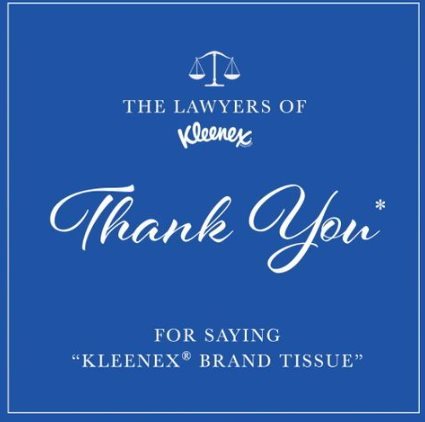
But what does ‘generic’ mean? A generic trade mark is a word or phrase that becomes the common term for an entire class of goods or services over time. They are not protectable under trade mark law. Essentially, the term becomes the 'brand' for a group of products. For example, the word ‘aspirin’ has become the common name for several pharmaceutical pain-relief products (regardless of the brand). Genericide happens when consumers, over time, associate extremely popular trade marks with the products and services themselves instead of their specific source.
The genericide of a trade mark can happen to any brand owner, even where the trade mark is being used and promoted in good faith. In order to continue enjoying the rights of your trade mark, trade mark owners should, at all costs, protect their brands from falling into the public domain. So what can a trade mark owner do in order to prevent this? There are a few things...

Save yourself from having to use a Kleenex® brand tissue while lamenting the loss of all the rights you may have acquired (at a great cost and effort) in your trade mark due to genericide. Use our tips to continue enjoying the brand rights and value in your trade mark.